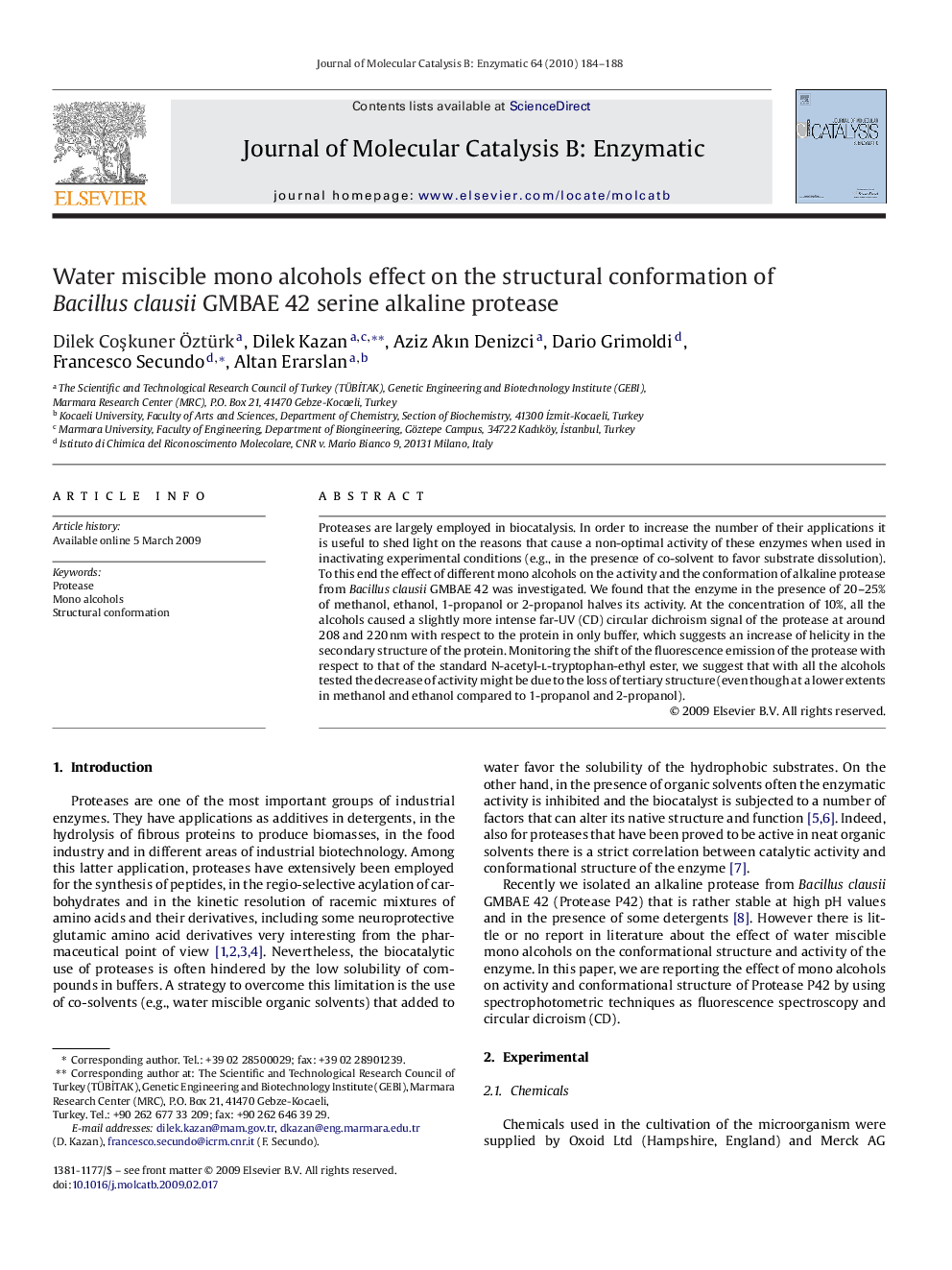| Article ID | Journal | Published Year | Pages | File Type |
|---|---|---|---|---|
| 70484 | Journal of Molecular Catalysis B: Enzymatic | 2010 | 5 Pages |
Proteases are largely employed in biocatalysis. In order to increase the number of their applications it is useful to shed light on the reasons that cause a non-optimal activity of these enzymes when used in inactivating experimental conditions (e.g., in the presence of co-solvent to favor substrate dissolution). To this end the effect of different mono alcohols on the activity and the conformation of alkaline protease from Bacillus clausii GMBAE 42 was investigated. We found that the enzyme in the presence of 20–25% of methanol, ethanol, 1-propanol or 2-propanol halves its activity. At the concentration of 10%, all the alcohols caused a slightly more intense far-UV (CD) circular dichroism signal of the protease at around 208 and 220 nm with respect to the protein in only buffer, which suggests an increase of helicity in the secondary structure of the protein. Monitoring the shift of the fluorescence emission of the protease with respect to that of the standard N-acetyl-l-tryptophan-ethyl ester, we suggest that with all the alcohols tested the decrease of activity might be due to the loss of tertiary structure (even though at a lower extents in methanol and ethanol compared to 1-propanol and 2-propanol).
